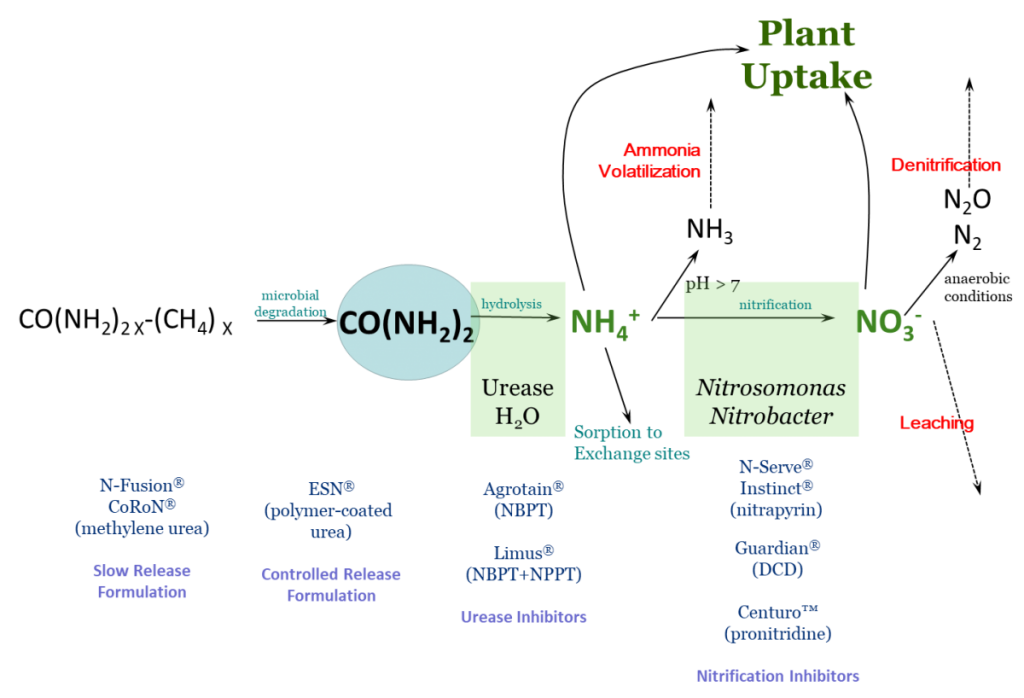The Technology
N- fertiliser management is challenging due to compounding factors affecting its post-application bio availability. Recent events in Lebanon may result in Urea becoming more dominant in agriculture and less reliance on Ammonium Nitrate. Nitrogen fertilisers contain ammonium, nitrate or urea, and losses occur through ammonia volatilisation, denitrification or leaching. Several inhibitors are available containing the naturally occurring enzyme urease which is present in soil bacteria and plants, and nitrification inhibitors which are a group of soil bacteria. Their performance and consistency is variable due to the complexities of multiple soil x climate factors in commercial UK field situations.
Recent advances in formulation technology including slow release polymers and hydrogels may also support more effective fertiliser targeting.
How it works
Urease inhibitors block activity of the soil and plant enzyme urease, which in the presence of water, breaks down urea into the readily volatilised ammonium. Studies have indicated that up to 50% of applied fertiliser Nitrogen can be lost to the atmosphere. Commercially available urease inhibitors prevent this loss. Nitrification inhibitors temporarily reduce natural populations of Nitrosomonas and Nitrobacter, responsible for converting ammonium to nitrite and nitrite to nitrate respectively. This indirectly helps to maintain fertiliser N in the ammonium form, preventing denitrification and leaching.
Farmer / Agronomist Benefits
Precision application of highly bioavailable N-fertilisers is a cornerstone of modern crop production. Environmentally safe additives which protect long-term soil microbiomes and reduce greenhouse gas emission and ground leaching, keeping the N within the crop, are a helpful tool to achieve this.
Key Researchers/Stakeholders
Origin
Gleadell
Yara
Omex
BASF
Corteva
Video / Social Media links
https://www.kimleigh.co.za/urease-nitrification-inhibitor/
Further reading
https://cropwatch.unl.edu/2019/nitrogen-inhibitors-improved-fertilizer-use-efficiency
